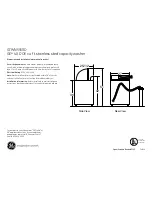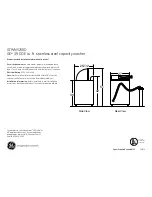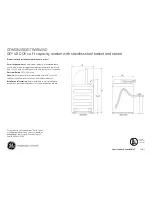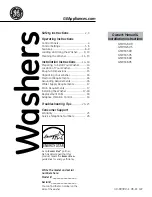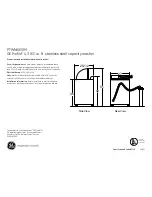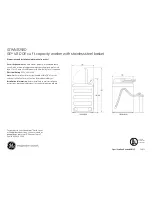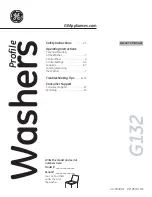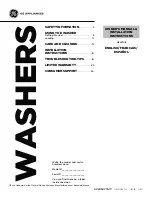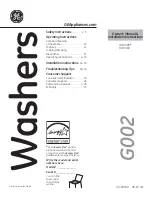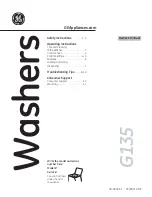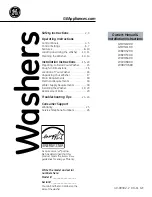
ARISTON DISHWASHER - Instructions for installation and use
7
D
ISHWASHER
Never without salt
Loading the salt.
Always use salt which is intended
for dishwasher use.
The salt container is situated
underneath the lower rack, fill it
up as follows:
1.Pull out the lower rack
completely, unscrew and
remove the container cap
2. Is it the first time you load the
salt? First fill the container up
with water (you won't have to
do this again next time)
3. Put the dishwasher funnel on the
hole and pour in approximately
two kilos of salt. It is normal
that some water comes out of
the container.
4. Screw the cap back in place
carefully.
Water in your home
When should I load the salt?
The salt container must be filled
when the "low salt" indicator light
"
E
" comes on.
Once you have loaded the salt for
the first time, it is normal that the
low salt indicator light stays on or
flashes for 5consecutive cycles.
Intelligent salt.
Your dishwasher can adjust its salt
consumption according to the
hardness of the water in your
home. This way, you can optimise
and customise your dishwasher's
salt consumption (not too much,
nor too little).
To adjust salt consumption, do as
follows:
1. Unscrew the salt container cap
2. There is an arrow on the neck of
the container (see figure): if
necessary, turn the arrow anti-
clockwise from the "-" setting
to the "+" setting.
Select the arrow position
depending on the water hardness,
You don't know
how hard the
water in your
home is? Ask the
company that
supplies water in
your area.
Water hardness varies according to where you live. If the water in your home is
hard, without water softening, incrustations would form on your dishes. Your
dishwasher is fitted with a water softener which uses special salt to get rid of
limescale in the water.
Using your electric household appliances
wisely helps you make savings and is
good for the environment.
Savings are easy
Maximum load.
To optimise consumption levels, try to use the
dishwasher with a full load only. If it takes
quite some time to fill up your dishwasher,
use the soak cycle to avoid the formation of
bad odours and caked-on food.
Half load.
Remember that, if need be, your dishwasher
also allows you to wash half a load (using the
upper rack only). Before setting any wash
cycle whatsoever (in this case, we recommend
you do not set the heavy duty wash cycle),
press button "H". Remember to use half the
amount of detergent.
The right wash cycle.
Select the most suitable wash cycle for the
type of load you have placed in the dishwasher.
The choice of wash cycle depends on the type
of dishes to wash and on how dirty they are.
To select the right wash cycle, please consult
the wash cycle table on page 6.
How to look after and protect
the dishes you hold dear
■
For particularly delicate dishes,
we recommend you use the
specific wash cycle offered by
your dishwasher.
Suggestions and advice for you.
Apart from
making you save
time and energy,
your dishwasher
disinfects your
dishes, washing
them at a high
temperature.
■
Silver plates and serving dishes
should be washed immediately
after use, especially if they have
contained salt, eggs, olives,
mustard, vinegar, fruit juices
and cooked vegetables.
■
Almost all silverware can be
cleaned in a dishwasher.
There are two exceptions: old
silverware and silverware
decorated with an oxidising
agent. Hot water can loosen
the handles on old silverware
ad wear off the decorations on
the other.
Never let silverware come into
contact with other metals: you
will thus avoid stains and
blackening
To prevent rust
from forming, load
the salt just before
beginning a wash
cycle.
Water Hardness
Clarke
degrees
°fH
mmol/l
Selector
position
Salt
consu-
mption
(grams/-
cycle)
Autono-
my
(cycles\2-
kg)
0 - 14
0 - 17
0 -1,7
/
0
/
14 - 36
18 - 44
1,8 - 4,4
"-"
20
60
36 - 71
45 - 89 4,5 - 8,9
MED
40
40
>71
> 89
> 8,9
"+"
60
25














